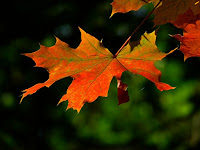Now that we are winding down the garden season, consider starting a compost bin in a corner of your property and produce your own compost with those trimmings from fall garden clean-up. Compost is rich soil that you can make from yard and kitchen
wastes in a matter of weeks or months. It’s fun and it
makes use of wastes that would otherwise go into our
landfill needlessly.

Compost bins can be small, you don't need a huge area to produce nice rich soil. The minimum size for a composting unit is 4 feet high, wide and long. It is easy to make your own unit from inexpensive materials such
as wooden pallets, stakes and chicken wire or you can purchase a contained unit from multiple sources locally or online.
Compost is made up of a mixture of ‘green’ or nitrogen
containing material and ‘brown’ or carbon containing material. Examples of nitrogen products include kitchen waste, grass clippings, and coffee grounds. Preferred carbon additions include dried leaves, small twigs, and newspaper. The key to a healthy compost pile is to keep a balanced
mixture of the two; it is best to start with a 30-1 carbon to
nitrogen ratio, but watch your pile closely and make any
needed adjustments to this ratio. A carbon ratio that is too high will cause the compost to break down slowly and a high nitrogen ratio can cause odors.
Much of your kitchen waste such as fruit peels, vegetable waste, and egg shells can be composted,. Although
all food waste can technically be composted, it is recommended
that some kitchen waste not be added to your pile
because it breaks down very slowly and attracts unwanted pests. Stay away from adding meat and dairy products as well as foods high in oils like peanut butter. Pet feces and kitty litter should not be added
because it may transmit disease.
Less experienced composters should avoid materials heavily infested with weed seeds, insects, and disease
organisms. Although a properly managed compost pile
can generate enough heat in the center to kill most of
these pests, producing uniform heat may be difficult,
particularly in a small compost pile.
Start with a base of brown material, and alternate layers of green and brown as you add to the pile. The smaller the particles in the compost heap, the faster the process will go. Chopping or shredding the wastes you put into the compost heap will also help speed the process. Water is also needed for uniform heating of the compost pile. Apply water as needed if
rainfall is lacking. Compost with appropriate moisture
content should resemble that of a moistened sponge that
has the excess water squeezed out.
When added to the garden, compost conditions existing soils with needed nutrients so that plants grow healthier. Mix
finished compost into
soil next spring when preparing for
planting. For more information on home composting
click here.
















